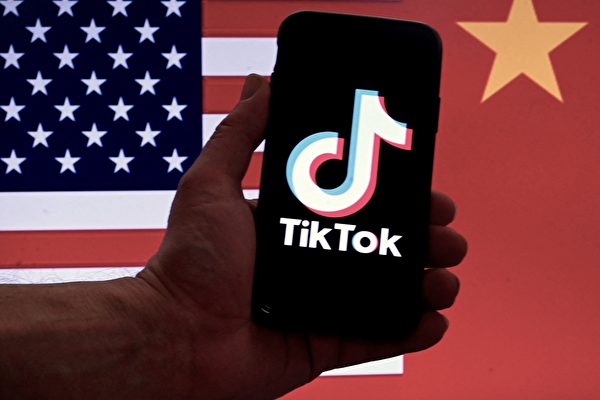Recently, the internal communications of TikTok staff have been publicly disclosed for the first time. These confidential documents are part of a more than two-year investigation by attorneys general from 14 states in the United States into TikTok. This investigation has led state officials to file lawsuits against TikTok on Tuesday (October 8), accusing the platform of deliberately designing addictive applications for teenagers, violating consumer protection laws in various states, and concealing risks from the public.
In separate lawsuits brought by state regulatory agencies, dozens of TikTok’s internal communications, documents, and research data have been edited and redacted due to a confidentiality agreement signed between the federal government and TikTok.
According to a report by the National Public Radio (NPR) on Friday (October 11), documents edited by the Kentucky Attorney General’s Office had defects. The Kentucky Public Radio copied and pasted excerpts of these edited materials, exposing around 30 pages of confidential documents.
A Kentucky state judge sealed the entire complaint at the request of the Attorney General’s Office to “ensure that any settlement documents and related information, trade secrets, and other protected information are not improperly disclosed.”
Internal TikTok documents indicate that despite the company’s knowledge of the widespread risks posed by its application, it showed no concern for the harm caused to American teenagers and continued to actively encourage children to use its application.
With 170 million users in the United States, TikTok’s highly personalized algorithm is captivating, making it challenging for users to leave the platform.
TikTok also identified the exact viewing volume necessary to form a habit – 260 videos. According to Kentucky investigators, afterwards, users are “likely to become addicted to the platform.”
Investigators wrote, “While this number might seem substantial, TikTok videos can be as short as 8 seconds and auto-play quickly for viewers. Therefore, in less than 35 minutes, an average user is likely to become addicted to the platform.”
According to the lawsuit documents, TikTok’s research showed that “compulsive use is associated with a range of negative mental health impacts, such as loss of analytical capabilities… loss of empathy and increased anxiety.”
Moreover, the documents also revealed that “compulsive use also interferes with fundamental aspects of personal life such as adequate sleep, work, school, and contact with family.”
Unedited documents indicated that TikTok employees were aware that spending too much time on social media could be harmful to the mental health of teenagers. Thus, they created a tool allowing parents to set limits on their children’s usage, ranging from 40 minutes to two hours per day, with the default being set at 60 minutes.
Internal TikTok documents showed that this initiative aimed to “increase public trust in the TikTok platform through media reports,” rather than reducing the time teenagers spend on the platform.
After testing, TikTok found that the tool had minimal impact, reducing usage time by only about 1.5 minutes. Before using the tool, teenagers spent about 108.5 minutes per day on TikTok, which decreased to approximately 107 minutes after using the tool.
One document showed a TikTok project manager saying, “Our goal is not to reduce usage time.” Another employee stated that the goal is to “promote Daily Active Users (DAU) and user retention.”
In public statements, TikTok claims that “one of its most important commitments is to support the safety and well-being of teenagers.” However, the internal documents paint a starkly different picture. They are very aware of TikTok’s harmful effects but have not taken significant measures to address them.
A TikTok executive warned in the documents that the addictive nature of the app could deprive children using TikTok of “other opportunities.”
He clarified, “I mean sleeping, eating, walking around in their room, or watching TV opportunities.”
According to a 2021 internal TikTok presentation, TikTok views itself as being in an “attention-grabbing competition.”
Teenagers were key customers for TikTok during its early development in the United States. Another internal content shown to company executives estimated that 95% of smartphone users under 17 years old use TikTok at least once a month, reaching a saturation point among young users.
According to TikTok’s own 2019 research, children are most easily drawn into TikTok’s endless flow of video content. “As expected, in most engagement metrics, younger users perform better.”
For children under 13, although TikTok has a policy prohibiting them from creating standard accounts, there is a “TikTok for Young Users” service with strict content gates.
US federal law prohibits social media sites like TikTok from collecting data of children below 13 unless parents are informed about the collected personal information.
In August of this year, the US Department of Justice sued TikTok for violating federal laws protecting children under 13’s data, accusing TikTok of “intentionally and repeatedly violating child privacy.”
In TikTok’s internal documents, company officials instructed managers to act cautiously when deleting suspected accounts of users under 13.
In 2022, Forbes reported that the “TikTok Live” platform was filled with encouragement or payments to young girls to livestream stripping. This led TikTok to conduct an investigation and confirmed that there were “substantial” amounts of adults sending messages to underage livestreamers for stripping. According to internal documents, users sent 1 million “gifts” or “coins” in just one month to underage children engaged in this stripping “trade behavior.”
In a discreet assessment, a TikTok official summarized, “Our key finding in this project, a significant challenge for live business, is that the content with highest engagement may not be the content we want to appear on the platform.”

